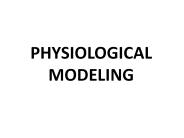Oculomotor PowerPoint PPT Presentations
All Time
Recommended
The phenomenology of eye movements. ... Each oblique inserts behind the equator of the eye. ... Vertical recti tort the eye as well as elevate or depress it. ...
| PowerPoint PPT presentation | free to download
that an object of interest can be foveated. ( Give example) ... SO, the VOR and the OKR work in a complementary fashion to keep an image foveated ...
| PowerPoint PPT presentation | free to view
THE TOP TEN THINGS YOU SHOULD KNOW ABOUT THE OCULOMOTOR SYSTEM 10. Movements of the eyes are produced by six extra-ocular muscles. If they, or the neural pathways ...
| PowerPoint PPT presentation | free to view
JI Simpson (1995) J Neurophysiol 73:1396-1413 ... between envelope and constant eigenvalue curve gives point of maximum gain. Pcell 1 weight ...
| PowerPoint PPT presentation | free to view
Sao Paulo, Brazil. MIRT 2003 (presentation 20 Sept. 2003) 2. Introduction ... Done by using antibodies against AMPA receptor subunits GluR1, GluR2, GluR3, and ...
| PowerPoint PPT presentation | free to view
The Cranial Nerves Names of cranial nerves Olfactory nerve Optic nerve Oculomotor nerve Trochlear ...
| PowerPoint PPT presentation | free to view
ENG and VNG are used to record oculomotor and vestibular tests. Electronystagmography is an important test done to evaluate patients with vertigo, dizziness, and balance problems. Videonystagmography is the most non-invasive, accurate, reliable, and affordable way of evaluating the vestibular and oculomotor systems.
| PowerPoint PPT presentation | free to download
Section 2 The Cranial Nerves( ) I. Olfactory n. ( ) II. Optic n. ( ) III. Oculomotor n. ( ) IV. Trochlear n. ( )
| PowerPoint PPT presentation | free to view
Section 2 The Cranial Nerves( ) I. Olfactory n. ( ) II. Optic n. ( ) III. Oculomotor n. ( ) IV. Trochlear n. ( )
| PowerPoint PPT presentation | free to view
Generate motor output based on current and past sensory input ... Adduct. Oculomotor (III) Superior rectus. Elevate. Oculomotor. Inferior rectus. Depress ...
| PowerPoint PPT presentation | free to view
... only efferent (motor) fibers Oculomotor nerve Trochlear nerve Abducent nerve Accessory nerv Hypoglossal nerve Mixed nerves: ...
| PowerPoint PPT presentation | free to view
Figure 9. Computerized oculomotor vision screening (COVS) validity for measuring monocular accommodative facility. (a) Monocular accommodative facility measures of ...
| PowerPoint PPT presentation | free to download
Discuss salient aspects of rehabilitation of stroke including CIMT, ... Visual, oculomotor & vestibular deficits. Central post-stroke pain. Deconditioning ...
| PowerPoint PPT presentation | free to view
Cranial Nerves Clinical Assessment The FACE of Cranial Nerves * * * * * * * * * I Olfactory II Optic III Oculomotor IV Trochlear V Trigeminal VI Abducens VII ...
| PowerPoint PPT presentation | free to download
Athletes and Cranial Nerves Contact sports have the highest incidence of nerve ... Optic Oculomotor Trochlear Trigeminal ... Bell s Palsy Auditory ...
| PowerPoint PPT presentation | free to view
The Cranial Nerves Names of cranial nerves Olfactory nerve Optic nerve Oculomotor nerve Trochlear ...
| PowerPoint PPT presentation | free to view
... Motoneurons whose axons form the sixth nerve ... motoneurons in the contralateral oculomotor ... ipsilateral facial palsy Impaired convergence ...
| PowerPoint PPT presentation | free to view
Medial sulcus of the crus cerebri 5. Oculomotor nerve 6 ... Contralateral hemiplegia due to corticospinal tract invovment Ipsilateral facial palsy Vll N ...
| PowerPoint PPT presentation | free to view
Maintaining balance and stability is essential for a healthy and active life, and Junction Point Physical Therapy recognizes the intricate role of the vestibular system in achieving this. This article explores the importance of vestibular health, the transformative benefits of Vestibular Physiotherapy Grande Prairie at Junction Point, and how the clinic addresses various conditions, including central nervous system disorders, neuropathy, age-related balance dysfunction, oculomotor dysfunction, benign paroxysmal positional vertigo (BPPV), labyrinthitis, Ménière’s disease, vestibular neuronitis, dizziness, and vertigo.
| PowerPoint PPT presentation | free to download
Physiology and Psychophysics of Eye Movements Muscles and (cranial) nerves 2. Classes of eye movements/oculomotor behaviors 3. Saccadic Eye Movements, metrics and ...
| PowerPoint PPT presentation | free to view
... three sub-scores corresponding to nausea, oculomotor effects, and disorientation. ... Differences obtained for the Oculomotor SSQ sub-scores (C) approached ...
| PowerPoint PPT presentation | free to view
Secretion of saliva and tears. Injury produces bell s palsy (paralysis of facial muscles). ... Cranial Nerve III - Oculomotor Type: mixed (mainly motor).
| PowerPoint PPT presentation | free to download
Progressive supranuclear palsy: oculomotor dysfunction (impaired vertical eye ... of pharyngeal muscles (pseudobulbar palsy); early falls; axial rigidity (neck ...
| PowerPoint PPT presentation | free to view
Sheep Hypophyseal Section. Name this structure. Corpus ... Name this space. Third Ventricle. Name this nerve. Oculomotor Nerve. Name this structure. hypophysis ...
| PowerPoint PPT presentation | free to view
Figure 2. Computerized oculomotor vision screening display view for (a) Binocular Vision Assessment 2 test selection screen, (b) Worth 4 Dot, (c) motor field (lateral ...
| PowerPoint PPT presentation | free to download
Thanks to s and publications by Pat Hanrahan, Christopher ... Oculomotor. Acoomodation. Covegence. muscle feedback. control signal. Visual. Binocular ...
| PowerPoint PPT presentation | free to view
Sixth nerve Anatomy of third nerve Oculomotor nucleus Pituitary gland Carotid ... artery IV Signs of right fourth nerve palsy Right overaction on left gaze ...
| PowerPoint PPT presentation | free to view
Oculomotor: moves eye constricts pupil, opens eyelid. lV. Trochlear: moves eye in and down. Cranial Nerves. V. Trigeminal: sensation to face, scalp cornea ...
| PowerPoint PPT presentation | free to view
Roof- is formed by the orbital plate of frontal bone and lesser wing of sphenoid ... Abducent nerve (6th cranial nerve) Oculomotor lower division (3rd cranial nerve) ...
| PowerPoint PPT presentation | free to view
Spiking neurons have monotonic I-f curves (which saturate, but only at very high ... Vertical Ret. Pos. ( deg) Activity. A. B -DE. Neural Integrator. Oculomotor theory ...
| PowerPoint PPT presentation | free to view
Glasses are an ocular tool to enhance eyesight. The oculomotor nerve is the nerve that moves the eyeball. What does the stem ocul mean? ...
| PowerPoint PPT presentation | free to view
afferent impulses for the. sense of smell. Cranial Nerve II: Optic ... Functions solely by carrying afferent impulses for vision. Cranial Nerve III: Oculomotor ...
| PowerPoint PPT presentation | free to view
Figure 11. Representative motor field diagrams are shown for (a) one study subject with normal motor fields and (b) another study subject with abnormal motor field ...
| PowerPoint PPT presentation | free to download
Eye Movements Smooth pursuit system Smooth pursuit brainstem Eye velocity for pursuit medial vestibular nucleus and nucleus prepositus hypoglossi Project to abducens ...
| PowerPoint PPT presentation | free to download
b. Trochlear IV. The trochlear nerve emerges from the lateral aspects ... b. Trochlear IV ... b. Trochlear IV. c. Trigeminal V. d. Abducens VI. e. Facial VIII ...
| PowerPoint PPT presentation | free to view
Saccade target selection. Casimir Ludwig. Iain Gilchrist. Experimental Psychology ... Participants saccade to a simple target. Distractors are presented ...
| PowerPoint PPT presentation | free to view
Title: PowerPoint Presentation Author: Farrel Robinson Last modified by: Shelley Created Date: 9/14/2004 11:58:58 PM Document presentation format
| PowerPoint PPT presentation | free to view
Slide 1 ... Cranial Nerves
| PowerPoint PPT presentation | free to view
Trochlear nerve. Trigeminal nerve. Abducens nerve ... IV - Trochlear. V - Trigeminal. VI - Abducens. VII - Facial. VIII - Auditory. IX - Glossopharyngeal ...
| PowerPoint PPT presentation | free to view
Title: Presentazione di PowerPoint Author: geremia Last modified by: Raffaele Geremia Created Date: 5/13/2005 11:01:18 AM Document presentation format
| PowerPoint PPT presentation | free to download
Sensation and Perception II
| PowerPoint PPT presentation | free to download
Title: Slide 1 Author: clow Last modified by: Don Clow Created Date: 9/7/2002 8:14:57 PM Document presentation format: On-screen Show Company: SSC Network
| PowerPoint PPT presentation | free to download
The brain stem The brain Telencephalon Diencephalon Cerebellum Brain stem The brain stem ...
| PowerPoint PPT presentation | free to view
Whiplash: sensorimotor disturbance. Why assess proprioception, eye movement & postural stability following whiplash ? Muscle spindle input merged with input from ...
| PowerPoint PPT presentation | free to view
BRAIN BRAIN STEM Medulla Oblongata Pons Midbrain Medulla Oblongata Pyramids Ascending Tracts Descending Tracts Descussation of Pyramids Cardiac Nuclei Respiratory ...
| PowerPoint PPT presentation | free to view
Afferent path on left eye is abnormal. Which muscles are in action? ... Eye brows limit upward field. Anticipate the visual field defects with lesions marked. ...
| PowerPoint PPT presentation | free to download
2-sclera--- posterior dense white part Middle vascular coat : ... Both veins pass backward through sup.orbital fissure to drain into the cavernous sinus.
| PowerPoint PPT presentation | free to view
Orientation to time is lost initially followed by loss of orientation to place ... ICP, tentorial herniation, head trauma with subdural or epidural hematoma ...
| PowerPoint PPT presentation | free to view
Title: PowerPoint Presentation Author: manny ortiz Last modified by: Jerry Created Date: 5/23/2004 7:42:23 PM Document presentation format: On-screen Show
| PowerPoint PPT presentation | free to download
http://www.youtube.com/watch?v=MIBPs-ZCKHw. Anatomy of the Vestibular System ... Ampulla: enlargement at the canal-utricle junction. Ampullary crest contains ...
| PowerPoint PPT presentation | free to view
PHYSIOLOGICAL MODELING * * OBJECTIVES Describe the process used to build a mathematical physiological model. Explain the concept of a compartment.
| PowerPoint PPT presentation | free to download
Chemoreceptors detect chemicals dissolved in solution ... CN VII - Facial sensory & motor. Cranial Nerves. CN VIII Vestibulocochlear - sensory ...
| PowerPoint PPT presentation | free to download
Contains centers for sensation of pain, temperature, and touch. Involved with emotions and alerting or arousal mechanisms. ... posture and movement.
| PowerPoint PPT presentation | free to download
Facial VII. Auditory (vestibulocochlear) VIII. Glossopharyngeal IX. Vagus X. Spinal Accessory XI ... CN VII (Facial), CN IX (Glossopharyngeal) and CN X )Vagus ...
| PowerPoint PPT presentation | free to view
The Bodies Electrical System: Brain and Spinal Cord. By: B. ... Dorsal ramus. Ventral ramus. Spinal Nerves. Cervical plexus. Brachial plexus. Lumbar plexus ...
| PowerPoint PPT presentation | free to view
Carotid body sensation (GVA) caudal solitary n. ... GVA Caudal Solitary nucleus. GSA Trigeminal (TBNC) SSA Cochlear and Vestibular nuclei ...
| PowerPoint PPT presentation | free to download
























































